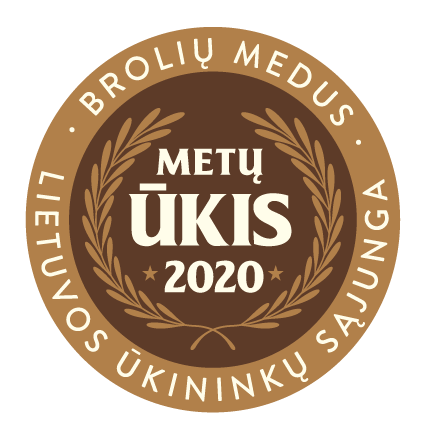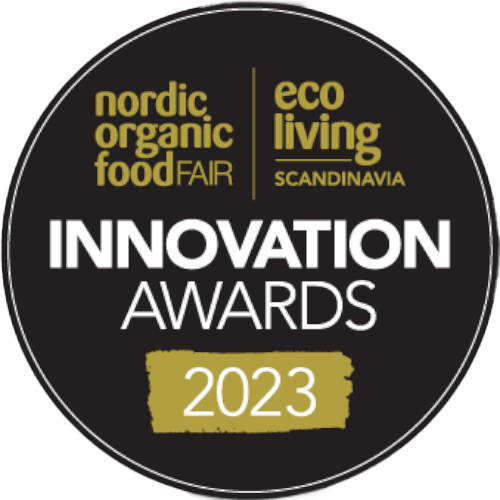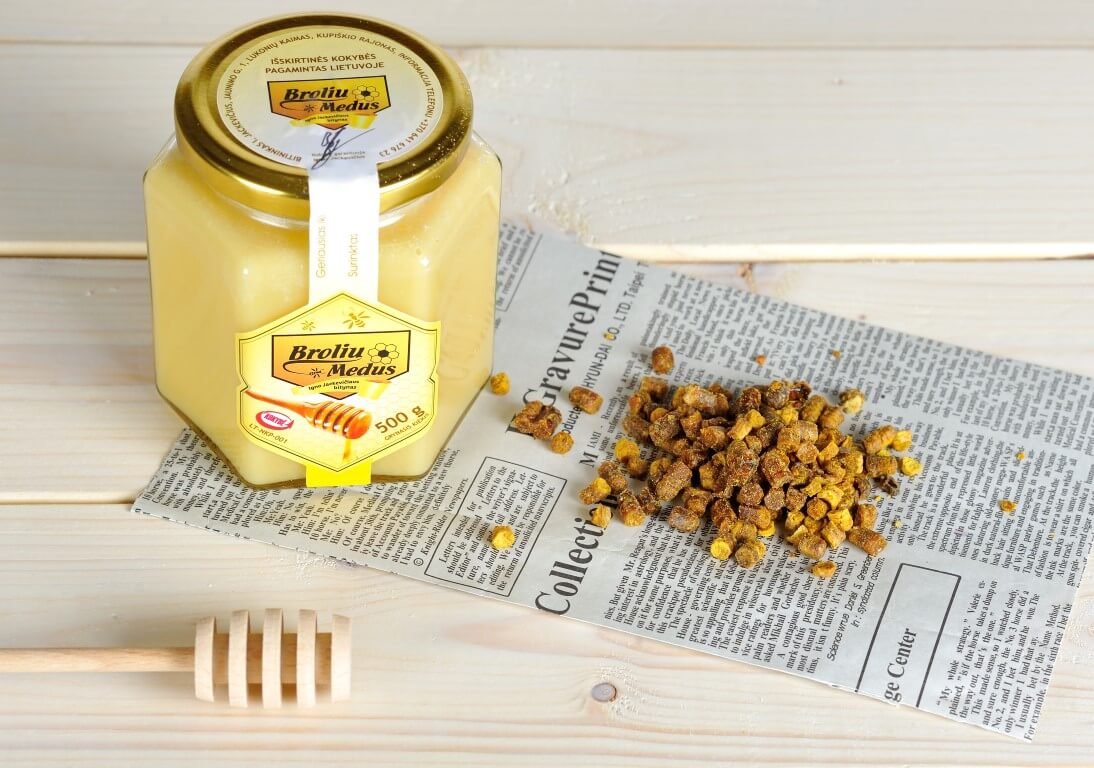Most of us know that bee products are food for health, but does everyone know how bees make them and what health benefits they offer?
We will discuss the following points:
- What is honey and why it is beneficial;
- What makes bee bread and pollen special;
- What is royal jelly (apilac) and how it can benefit us.
We would like to introduce you to bee products by diving into a beautiful story.
How is food for health made?

With our flow hive, you’ll not only get to witness bee life from up close, you’ll also be able to have a taste of the freshest honey there is.
Seal, seal, seal and repeat.
Did you know that bees are masters of preserving food? In their busiest six weeks, they seal off more mini jars (honeycomb cells) than we will seal pickle jars in a lifetime. It seems that this is their answer to the age-old question: why do our pickles run out before the New Year, while the bees enjoy the fruits of their labour all the way up until their next harvest?
Sealing is one of the oldest known preserving methods, which the bees themselves probably invented. For us, sealing means disinfecting or sterilising jars, boiling and heating them, but for the bees, all they need is one small layer of wax and tada! — their preserves are sealed. Tempted to try the same method? We don’t recommend that our more nervous readers try this at home: you’ll end up with no pickles and your nerves frayed.
Bees begin to put away winter stores much earlier than we begin to reap our harvest — with the last of the summer flowers. For them, it is of critical importance that their storerooms are filled to the brim – for you never know what kind of winter awaits: whether there will be an early spring or a late and lethargic one that’ll crawl in over the fields unwillingly; whether there’ll be a feast inside the hive or you’ll have to make do with the last of your stores – almost like us before a payday… The bees like their fermented and matured products, and ones they have freshly made themselves. Though they aren’t inclined to reveal the recipes they have inherited from previous generations, we will share with you what we’ve had the privilege of discovering.
Matured honey instead of sugar
Honey is a natural sugar substitute that doesn’t lead to sudden spikes in blood sugar (which is why it can be used by diabetes sufferers). What is more, if the honey hasn’t been thermally processed, it will also contain various vitamins and minerals, which is something that cannot be said of sugar.
Those lucky bees, you say, only eating matured honey… Well, the truth is that the honey that makes it to our table is also matured. Unless, of course, you’ve ordered the freshest possible honey, just in from the gatherer bees, which, unfortunately, isn’t even really suitable for making it through the winter. Bees know this, so they prepare their honey for the winter with a great sense of responsibility. The main ingredient of this bee preserve is plant nectar, which the bees pour into the honeycomb cells. Making honey is much like making soup: the flavour you get will depend on the types and quantities of plant material that you put in it. Of course, ruining a soup is much easier to do… When the honeycomb cell is full, the bees begin to ventilate the nectar using their semi-automatic non-electric conditioning units – their wings – until the honey takes on the right consistency. The hive supervisors assess the nectar and, if the result is where it needs to be, the cells are sealed with a thin but air-tight wax cover. No additives needed!
Matured honey differs from fresh honey in colour, consistency and nutritional value. This honey sets faster and gains a creamy consistency as well as a distinct flavour. Of course, this also depends on the plants that the nectar was gathered from. Buckwheat honey has a sharper flavour and an almost chocolatey colour, while linden honey is milder and golden in colour. Raspberry honey protects from autumn chills, while dandelion (spring) honey protects from the vitamin deficiencies of the spring. Every type of honey is special in its own way. The different types of honey are described more comprehensively in another blog post. The post also covers The benefits of honey for the human body, in which we share scientific insights into the health benefits of honey.
Much like with fermentation, maturing honey involves chemical processes during which certain compounds turn into others and become easier to absorb. Besides, as the Egyptians once claimed, it is matured honey that has an unlimited shelf life and is an unending source of energy. What more do you need as you spend the colder months of the year in the hive?
Fermented bee bread is a true superfood
First and foremost, bee bread is a source of protein. Regular consumption supplements the body with vitamins and minerals and has an anti-inflammatory, antiseptic and regenerative effect on all human cells.
They say that fermented products are a really healthy choice that enriches the body with enzymes, minerals and other valuable nutrients. It seems the bees heard this be said and passed the news on to the entire hive because ‘fermented’ pollen (bee bread) is their signature dish, that every last worker bee is capable of making: from a freshly hatched little one to a mature gatherer bee. To those who have never had a taste, we insist you try it. We believe that you’ll be pleasantly surprised by the flavour palette, because every little loaf is like an undiscovered new world with its own magical taste. And now we’ll get to revealing the recipe, passed on from generation to generation, that bees use to make bee bread, in case you wish to make some of the this ‘preserve’ yourself.
So, if you want to make yourself some bee bread, first, gather some pollen from as many different flowers as you can find. Bees collect the pollen on the hairs of their hind legs. So the simplest method for you to collect the pollen you’ll need is to run several kilometres with your legs bare through the fields with a kilometre-counting app on. When you’ve covered at least 15 km, you can fly or crawl back home (whichever way works best for you). Congratulations, the easiest stage of the bread-making process is over. Once you are home, scratch the pollen caught on your leg hairs off and place them for storage in honeycomb cells. Just be sure to compress them very well. Not all that difficult, right? Finally, pour honey over the pollen, seal the cells with wax and leave to ferment at a stable temperature. The fermentation process is what gives bee bread its sweet and sour flavour, reminiscent of freshly-baked rye bread.
In the hive, bee bread is the main source of long-keeping protein. Just don’t get the idea that bees are busy building muscle during their off-season. Protein is essential for all bodily processes: digestion requires enzymes, which, by the way, are actually proteins; cell growth requires some form of building block, typically — protein; even the sensation of happiness depends on hormones, which are the product of proteins. So in the winter hive, bees grow, digest and live surrounded by happiness hormones.
Besides being very delicious, bee bread has many health-benefiting components. So, bee bread is rich in vitamins, protein, carbohydrates, natural amino acids and enzymes, essential oils and other nutrients valuable to both bees and people. The benefits of bee bread have been scientifically proven and tested by many years of folk medicine. This bread might not work for making sandwiches, but it will do wonderfully as a dessert or snack.
The impressive effect of royal jelly (apilac)
Royal jelly is a very strong natural product, so consumption is only recommended in the smallest of doses. It is much easier to name what royal jelly doesn’t contain because even scientists haven’t got to the bottom of what it does contain. It has such a rich composition that royal jelly is considered one of the best natural products for helping a worn-out body recover and replenishing nutrients for those who are involved in intense intellectual work or physical exercise.
Scientists are constantly studying this magical food of the queen bee, but no synthetic analogue has ever successfully been created — the bees won’t betray their recipes even under duress. All that science has revealed so far is the complex composition of royal jelly, rich in vitamins, minerals, enzymes and other biologically active substances. However, if the right conditions are provided, there will be no need for synthetic royal jelly – the bees themselves will make some for us. Just remember that the place for royal jelly is not in the pantry alongside the jam jars, but in the fridge along with all the fresh produce.
‘Milking’ bees is no joke. But experienced beekeepers have mastered this, let’s say, art, so if you want to have a taste of royal jelly, there will be no need to do any milking yourself. In truth, bees don’t actually produce any milk, though they do secrete a whitish liquid reminiscent of milk that they feed to young larvae and the queen bee. Because of its functional purpose and similarity to milk, this secretion began to be known as ‘bee milk’. The larvae of worker bees are fed this milk for just the first few days, while the queen bee is fed only bee milk its entire life: from larva to adulthood. Interest in royal jelly began to grow when it was observed that even though bee larvae are identical, feeding certain larvae royal jelly made them develop into queen bees. From this point on, royal jelly jelly began to be considered a magical and uniquely valuable substance. . It is loaded with protein, carbohydrates, minerals, essential amino acids, hormones and other biologically active compounds. Because of its rich composition and potent effect, it is important not to overuse royal jelly. Unlike with other bee products, it’s safer to view royal jelly as a medicine rather than a food product.
And unlike most other bee products kept in the pantry, royal jelly is consumed by drinking it fresh, just as it is made. Thanks to the abundant stores they keep, bees will not only survive but also have the capacity to constantly produce royal jelly, which is the queen bee’s snack, main meal and dessert rolled into one. Royal jelly is also the first food that regular bee larvae will get, so it truly is a hive essential.
Bee products are great food for better health — both physical and mental. But ultimately, they are food and not medicine, so any beneficial effect will require regular and long-term use to achieve.
To your health and happiness!
[ux_bestseller_products products=”” columns=”4″ title=”Produktai sveikatai – tiesiai iš avilio”]







